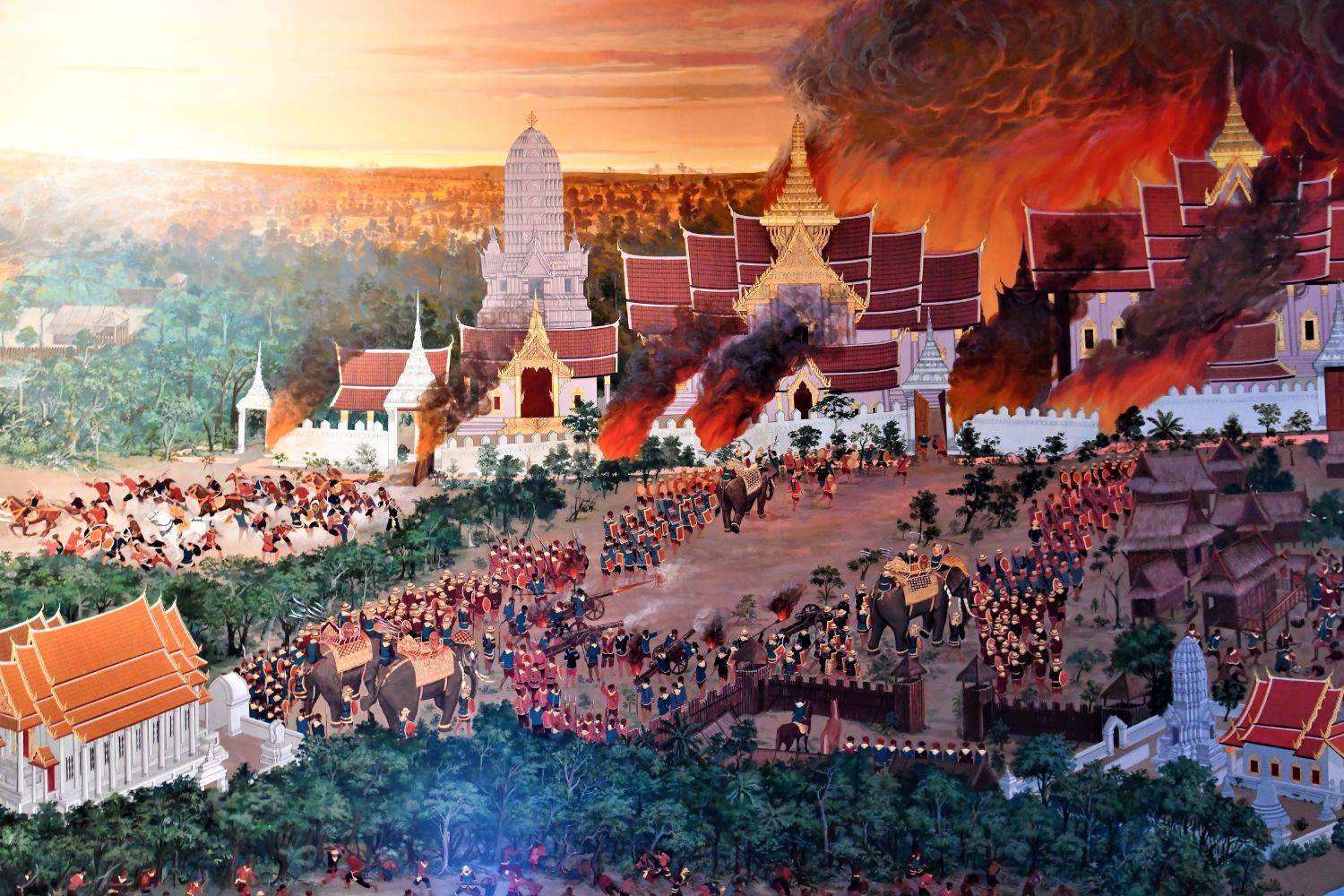
Ayutthaya-Lan Na War was a series of conflicts between the Ayutthaya Kingdom and the Lan Na Kingdom in what is now Thailand. These wars, spanning several decades, were marked by intense battles, shifting alliances, and significant cultural exchanges. Ayutthaya sought to expand its territory and influence, while Lan Na aimed to maintain its independence and regional power. The clashes not only shaped the political landscape of Southeast Asia but also left a lasting impact on the region's history. From strategic maneuvers to legendary leaders, the Ayutthaya-Lan Na War offers a fascinating glimpse into the past. Here are 30 facts that will help you understand this pivotal period.
Key Takeaways:
- The Ayutthaya-Lan Na War, fought between two powerful kingdoms in 15th century Thailand, shaped the region's culture and society, leading to lasting impacts on art, architecture, and military tactics.
- The war ended with Ayutthaya emerging as the dominant power, influencing neighboring states, while Lan Na retained its independence but became a tributary state. The conflict's legacy continues to be felt in modern Thailand through historical sites, literature, and regional politics.
The Ayutthaya-Lan Na War: An Overview
The Ayutthaya-Lan Na War was a significant conflict in Southeast Asian history. It involved the Kingdom of Ayutthaya and the Kingdom of Lan Na, two powerful states in what is now Thailand. This war shaped the region's political landscape and left a lasting impact on its culture and society.
-
The Ayutthaya-Lan Na War took place in the 15th century, specifically between 1441 and 1474.
-
Ayutthaya, founded in 1351, was a major trading hub and cultural center in Southeast Asia.
-
Lan Na, established in 1292, was known for its unique culture and strong military.
-
The war began due to territorial disputes and competition for regional dominance.
-
Both kingdoms sought control over the fertile Chao Phraya River basin.
Key Battles and Strategies
Several key battles defined the Ayutthaya-Lan Na War. Each side employed unique strategies to gain an advantage.
-
The Battle of Chiang Mai in 1441 marked the war's beginning, with Ayutthaya launching an attack on Lan Na's capital.
-
Lan Na's King Tilokaraj used guerrilla tactics to defend against Ayutthaya's larger forces.
-
Ayutthaya's King Borommatrailokkanat focused on siege warfare to capture fortified cities.
-
The Battle of Lampang in 1456 was a significant victory for Lan Na, halting Ayutthaya's advance.
-
Naval battles on the Chao Phraya River played a crucial role in controlling trade routes.
Important Figures
Several key figures emerged during the Ayutthaya-Lan Na War, influencing its outcome and legacy.
-
King Borommatrailokkanat of Ayutthaya was known for his military prowess and strategic mind.
-
King Tilokaraj of Lan Na was a skilled leader who successfully defended his kingdom.
-
Queen Suriyothai of Ayutthaya famously fought in battle, showcasing the role of women in warfare.
-
General Ramesuan of Ayutthaya led many successful campaigns against Lan Na.
-
Prince Yuttitthira of Lan Na was a key military commander and strategist.
Cultural and Social Impact
The Ayutthaya-Lan Na War had a profound impact on the culture and society of both kingdoms.
-
The war led to the exchange of cultural practices and traditions between Ayutthaya and Lan Na.
-
Art and architecture from this period reflect the influence of both kingdoms.
-
The conflict spurred advancements in military technology and tactics.
-
Trade routes were disrupted, affecting the economy and daily life of the people.
-
The war fostered a sense of national identity and unity within each kingdom.
The Aftermath
The conclusion of the Ayutthaya-Lan Na War brought significant changes to the region.
-
The war ended in 1474 with a peace treaty that established clear territorial boundaries.
-
Ayutthaya emerged as the dominant power in the region, influencing neighboring states.
-
Lan Na retained its independence but became a tributary state to Ayutthaya.
-
The peace treaty facilitated trade and diplomatic relations between the two kingdoms.
-
Both kingdoms focused on rebuilding and strengthening their societies post-war.
Legacy of the Ayutthaya-Lan Na War
The legacy of the Ayutthaya-Lan Na War continues to be felt in modern Thailand.
-
Historical sites and monuments from the war period attract tourists and scholars.
-
The war is remembered in Thai literature, art, and folklore.
-
Lessons from the conflict are studied in military academies and history courses.
-
The war's impact on regional politics is still evident in contemporary Southeast Asian relations.
-
The Ayutthaya-Lan Na War remains a symbol of resilience and strategic brilliance in Thai history.
Final Thoughts on the Ayutthaya-Lan Na War
The Ayutthaya-Lan Na War stands as a significant chapter in Southeast Asian history. This conflict, marked by intense battles and strategic maneuvers, shaped the political landscape of the region. The war showcased the resilience and tactical prowess of both kingdoms, leaving a lasting impact on their cultures and societies. Understanding this war provides valuable insights into the historical dynamics of Thailand and its neighboring regions. The legacy of the Ayutthaya-Lan Na War continues to influence modern Thai identity, reminding us of the rich and complex history that has shaped the nation. As we reflect on these events, we gain a deeper appreciation for the intricate tapestry of Southeast Asian history and the enduring spirit of its people.
Frequently Asked Questions
Was this page helpful?
Our commitment to delivering trustworthy and engaging content is at the heart of what we do. Each fact on our site is contributed by real users like you, bringing a wealth of diverse insights and information. To ensure the highest standards of accuracy and reliability, our dedicated editors meticulously review each submission. This process guarantees that the facts we share are not only fascinating but also credible. Trust in our commitment to quality and authenticity as you explore and learn with us.
